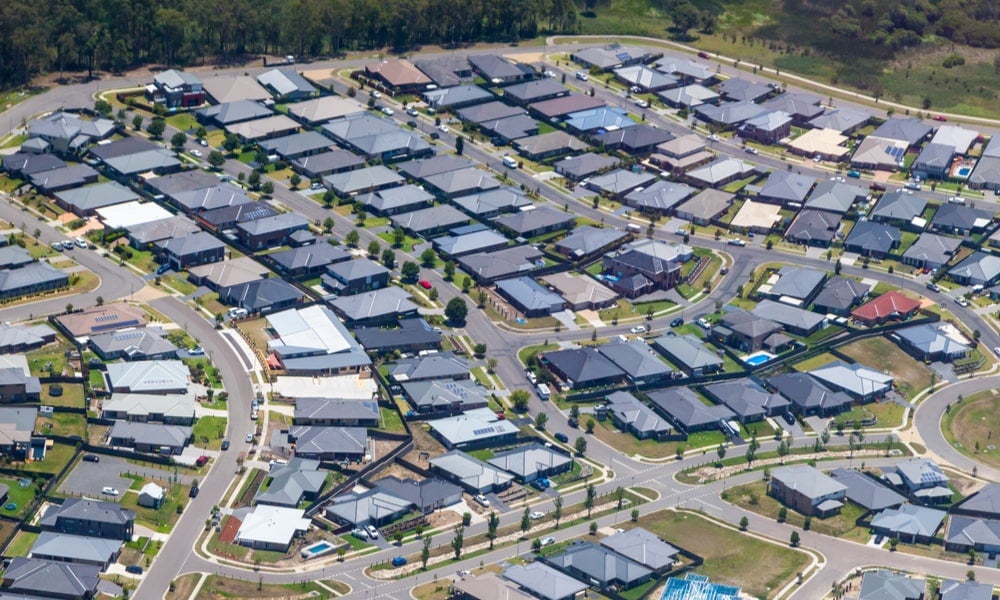ALP’s housing support plan: good policy or risky bubble generator?
The ALP’s housing support policy creates significant risks and voters will need to carefully consider these risks versus alleged benefits, writes UNSW Business School's Mark Humphery-Jenner
The ALP has announced its housing support policy. They aim to help people buy properties by co-buying properties with people. The ALP has argued that their scheme would assist home buyers. However, there are significant concerns that it could exacerbate a housing bubble. Thus, it warrants closer examination.
When examining any policy, an academic institution should not preach to you about how to vote. Our role is to provide perspectives, and information, to help you make an informed decision. Ultimately, your vote is yours to make based on what you feel is best after balancing the risks and rewards – and costs and benefits – of policies that are important to you. With that in mind, let’s look at the policy in more detail.
What is the plan?
Under this scheme, the government would co-own property with eligible homebuyers. Here, the government would provide a so-called “equity contribution” to homebuyers. This is a euphemism for the government buying and owning part of the house. In turn, the prospective buyer would need to raise less money but would own less of the property. The “contribution” is up to 40 per cent for newly built dwellings, and 30 per cent for existing ones.

This would be open to 10,000 ‘eligible’ buyers earning up to $90,000 for individuals or $120,000 for couples. They would only need to raise a 2 per cent deposit. The property value has limits. For example, it could be worth up to $950,000 in Sydney (and other NSW regional centers), $850,000 in Melbourne, or $650,000 in Brisbane. Thus, the program could cost taxpayers up to $3.8 billion, but would likely cost less.
The ALP’s plan contrasts with The Coalition’s first homebuyer scheme, which has up to 50,000 places. The ALP has support the first home buyer scheme, and appears to want to add to, rather than replace, the scheme. Under the Coalition’s program, first home buyers would be allowed to pay a lower deposit for houses below a certain price, and would not need to pay lenders' mortgage insurance. Lenders' mortgage insurance can be tens of thousands of dollars. Thus, the government implicitly saves individuals a significant sum. Given that LMI would typically also be paid back with the borrowing, with interest, lenders' mortgage insurance can be extremely expensive. The government facilitates this by underwriting the risk for the banks.
The ALP’s plan could have a cost blowout. There have already been calls for the number of places to increase. If the plan is expanded, to cover the 50,000 people under the first home buyer scheme, it could cost up to $19 billion. This is foreseeable given that the limits on the ALP’s scheme are themselves arbitrary.
Could the plan push up house prices and exacerbate a housing bubble?
The ALP’s plan could foreseeably increase house prices. In this way, the plan could be self-defeating. After all, the plan hardly solves housing affordability issues if it makes housing more expensive. This will also create additional risks for the property market, for lenders, and for taxpayers.
Read more: Australia's mortgage interest rates are fixed for shareholders, not home owners
The ALP’s plan is estimated to add $5 billion in additional housing demand. However, such estimates are always elastic. The housing market is a $9 trillion market. However, merely comparing $5 billion to $9 trillion is simplistic. Rather, we need to consider whether the scheme would increase demand at the low price end, which will filter up.
The scheme would logically push up house prices. The intuition behind this is that the government has now reduced the amount people need to raise to buy a house by agreeing to co-buy it. In so doing, they have enabled people to pay more for a house. And, when several people can afford higher prices, they will compete and push prices up.
To see why, we need to consider the set of houses priced under the threshold (i.e., $950,000 in Sydney). Suppose there is a pool of buyers for a house. Suppose those buyers for a house are willing to pay $800,000 for a house. Now, suppose one buyer has access to the scheme. In a competitive environment, they would become the marginal buyer, and could push the price up. In this case, to $801,000, for example. Now, suppose two buyers can access the scheme. Here, they can compete on price and can potentially push it up to $950,000. Now, consider a situation where there are thousands of such buyers. This can create significant demand up to that threshold. But, then the houses just above the threshold will see that they are slightly better value at $950,000, so the sellers will demand higher prices. This can continue throughout the housing price chain.

The precise magnitude of this impact is unclear. The housing sector has welcomed it. However, there is a clear potential vested interest in the housing industry welcoming more money into the housing industry. Indeed, there were already claims that the first home buyer scheme would increase prices, so this would only exacerbate the issue.
What about risks?
The ALP’s policy creates significant risks. This is a non-exhaustive discussion. The below issues can create prudential risks, and create large losses for taxpayers. The ALP will need to consider how to mitigate these risks should it form government.
Property speculation: The government would be speculating on the property market. This is because the government would take equity in those properties; and thus, become sensitive to property prices. Westpac has already argued that property prices could face a “sharp” correction. For example, Westpac indicates that Sydney property prices could fall 14 per cent. Thus, the government risks exacerbating a housing bubble, which is liable to pop as international interest rates rise. This is a risky decision.
The government thus risks buying into properties that will fall in value. While property prices have often increased over the long term, this need not be the case over a short- or medium-term time horizon. Thus, the government risks losing money should property prices fall.
Read more: Budget expands first home buyers deposit loan scheme – what are the risks?
Fire sales and risks: The government is allowing loans to people who proffer a 2 per cent deposit and is facilitating relatively risky purchases. We saw in the Global Financial Crisis that promoting risky loans to people who could not adequately afford properties could result in significant financial distress. Thus, the government faces adding more risks to the housing and banking sector. While the government could require banks to hold more capital reserves to mitigate these risks, this will increase banks’ costs and increase the overall cost of borrowing for other consumers.
Should such borrowers default, the government will need to go along with a fire sale following that financial distress. Ultimately, this would likely achieve a poor price for the government and increase investment risks. The taxpayer ultimately finances this loss.
Conflicts: The government faces a classic “principal-principal conflict”. Here, the individual owns 60 per cent plus of the property and the government owns up to 40 per cent of the property. Thus, should a lazy, or delinquent, owner allow damage to the property, they gain 100 per cent of the “utility” from this (i.e., shirking, being messy, partying) and only bear part of the cost.
In this way, poor quality co-buyers could impose costs on the government, which results in costs for the taxpayer. In some ways, this is analogous to how renters might damage landlords’ property when they are aware they might not bear the full cost of such damage.
Most co-buyers would take care of property. However, we have all known neighbours who let their properties deteriorate even when they fully own the property. One can imagine that this would worsen when they have factional shares or believe the government will underwrite the cost of repairs for a sale.

Where then does this leave us?
Labor has attempt to create a policy to solve housing affordability issues. If Westpac is correct, and house prices fall, then the market could solve these for the government itself. But, nevertheless, the ALP has created an interesting proposal.
The ALP has proposed a co-buying solution. The ALP proposes that for eligible people, the government will co-buy a property with a person, buying up to 40 per cent of the property. Here, the government would directly involve itself in the property market.
The ALP’s policy plan is intriguing but is flawed. It is likely to exacerbate the housing potential housing bubble. It is costly. It exposes the government to property price risks. After pushing prices further into elevated territory, the eventual property prices will not always increase over all time frames. It can raise the prospect of risky loans, which, as the GFC shows, often ends badly. The government, banks, and taxpayers also face the prospect of borrowing defaults and fire sales: the co-buying model creating a direct exposure for the government. Thus, the policy has policy issues that the government will need to address.
In short, the policy creates significant risks. It will very likely increase house prices, especially if expanded. This will ultimately make the policy self-defeating and could exacerbate housing bubbles. It also exposes the government (and taxpayers) to the risk of property price declines after that bubble arises, especially as interest rates increase.
Ultimately voters will need to consider whether the alleged benefits from the policy are tangible and whether they offset the risks. This is a decision for each individual voter to make after weighing the expected costs and benefits.
Mark Humphery-Jenner is an Associate Professor in the School of Banking & Finance at UNSW Business School. He has been published in leading management journals and his research interests include corporate finance, venture capital and law. For more information please contact A/Prof. Humphery-Jenner directly.
